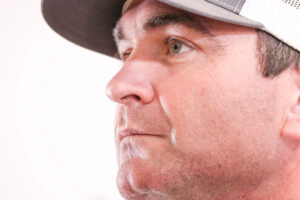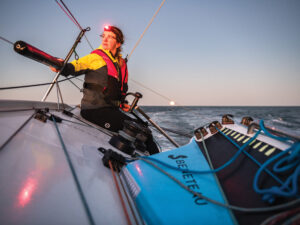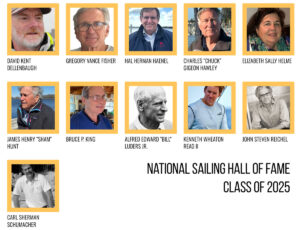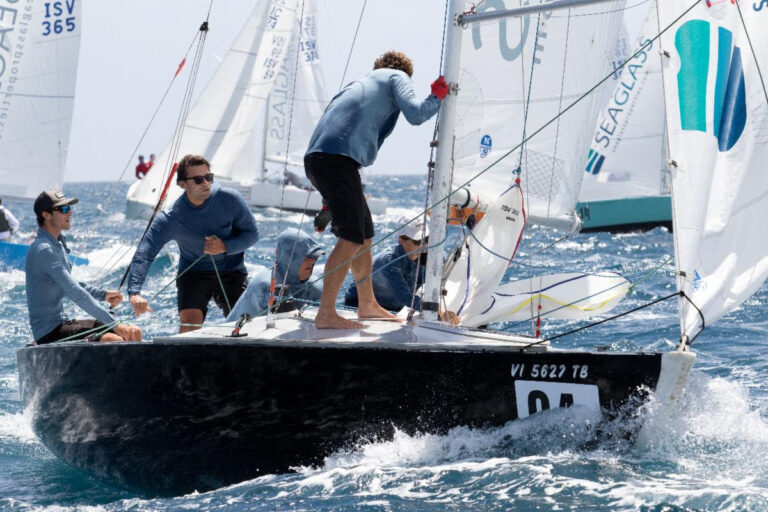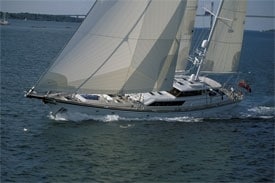
Transat 1
“Racing a yacht across the North Atlantic is not entirely a technical feat nor even an adventure in the classic sense; but it is a great emotional and physical experience for those involved-moments of exhaustion and exultation, of cold fog and blazing sunshine, of hard driving and maddening drifting. And always watch after watch the routine of living and ship keeping goes on, day and night, with never a sense of monotony.” Carleton Mitchell, gentleman racer and author, penned these words in the preface of his 1953 book Passage East, an account of his transatlantic race in 1952. Mitchell’s words have inspired generations of ocean racers, and I’m no exception. I’ve always wanted to do a transatlantic race, but opportunities have been few and far between. This Saturday, after 26 years of ocean racing, it’s finally going to happen. I’ll be reporting from the 130-foot S&S ketch Sariyah as it takes part in the 2005 Rolex Transatlantic Challenge. Sariyah-which is under charter to New York YC member Cortright Wetherill Jr. for the race-did well in the 1997 version of this event, the Atlantic Challenge Cup, taking second place. For this event, Sariyah has added some new sails and gear to its inventory, as well as additions to the regular crew such as Olympic gold medalist Kevin Burnham, weather guru Bill Biewenga, and Peter Harken. We’ll have a total of 17 aboard for the roughly 3,000-mile race, which we hope will be plenty of hands for whatever the North Atlantic may throw at us. I’ve got thousands of offshore miles under my belt, but it’s all been below the 45th parallel. For this race, the shortest distance between the starting line off New York Harbor and the finish off Land’s End, England involves heading much further north. In fact, to ensure that we don’t get too far north, into iceberg territory, the race committee sets a mark (Point Alpha) that we must leave to port. The key early tactical decision is how to take advantage of the Gulf Stream, which moves from west to east across the Atlantic. Sailing south to get to the Stream seems crazy when you’re actually trying to get north, so where you meet the Stream is a tough call. Thanks to transponders mounted on every boat, we’ll be able to track our competition on the event website. We’ll see (and so will you) where everyone heads in the critical first few days of the race and who’s made the right, or wrong, call. Saturday will begin at 9 a.m. with a parade of sail down the Hudson River, past the Statue of Liberty, and out to a starting line that’s roughly between Sandy Hook, N.J., and Ambrose Tower off New York Harbor. The first gun goes off at 2 p.m., and Class 1, which is the Grand Prix Class, starts at 2:10 p.m.. Class 2, Performance Cruising (our class) will start at 2:20 p.m., and Classes 3 and 4 will follow in 10 and 20 minutes, respectively. If you have a chance to see any of Saturday’s events, do it. Some of the fastest large monohulls in the world-Mari-Cha IV, Maximus, Leopard of London, Sojana, and Carrera-are entered, as are some of the most luxurious yachts and some of the prettiest classics. For a detailed list of entries, see the nyyc.org website. I’ll be sending daily reports to www.sailingworld.com about life aboard Sariyah during the race. I’ll be helping Biewenga with navigation, so some of my reporting will focus on the weather, our routing, and the choices we’re making en route. I’ll be using the latest in tactical software, Expedition 2, as well as Nobeltec’s Visual Navigation Suite. But I also hope to capture what it’s like to push a luxury yacht hard across the Atlantic with a crew that wants not only the experience, but some silver as well.

